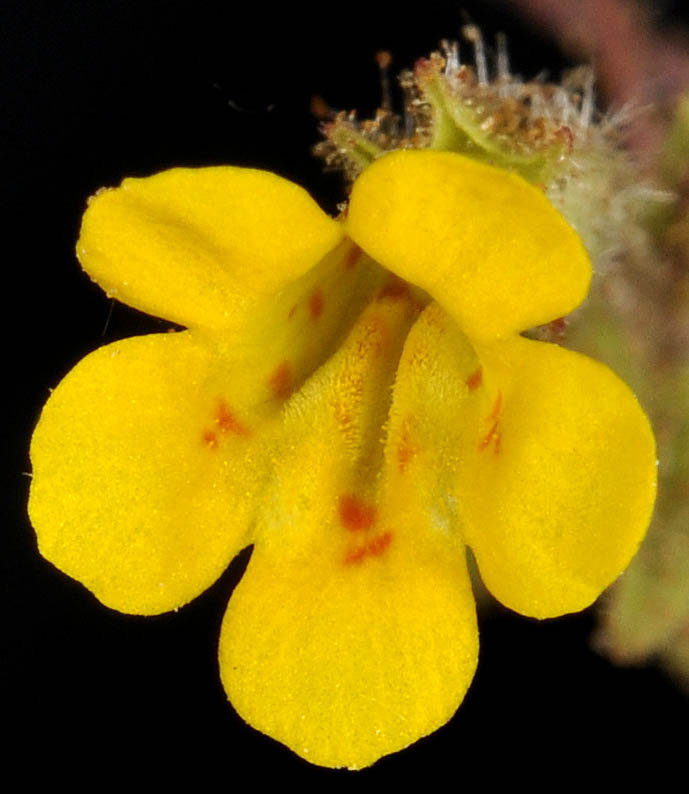Erythranthe grandis
Erythranthe floribunda
large monkey-flower
purple-stem monkey-flower
Leaves basal and cauline, basal leaves generally not persistent;
petioles 10-80 mm, becoming reduced distally;
blade ovate to broadly elliptic, 25-60 mm long and 20-40 cm broad, palmate or nearly pinnate venation with 5-7 veins, base truncate to nearly cruneate to nearly cordate, margins crenulate to toothed, occasionally sublyrate near base, apex rounded to obtuse, surfaces of distalmost leaves hairy as stems.
Leaves opposite, deltoid-ovate to sub-cordate, dentate or denticulate, sub-palmate or nearly pinnately veined, the blade 1-3 cm. long, the petiole shorter.
Inflorescence racemose, bracteate, flowers 8-26; fruiting pedicels 10-35 mm, hairy as stems;
calyx straight-erect or nodding at 45-100 degrees, ovate to bell-shaped, inflated, compressed along sagittal plane, 15-22 mm, hairy as stems, throat closing;
corollas yellow with red spots inside, symmetric bilaterally, bilabiate;
tube-throat widely funnel-shaped, 16-24 mm, protruding 10-15 mm beyond calyx margin, limb widely expanded;
styles hirtellous;
anthers not protruding, glabrous.
Flowers solitary in the leaf axils on long pedicels;
calyx 4-8 mm. long, the 5 acute, equal teeth less than 2 mm. long;
corolla yellow with some red dots, 6-14 mm. long, only slightly bilabiate, the lips about equal and only slightly flaring, the throat with pubescence on the lower side;
stamens 4.
Capsules 8-12 mm, included.
Capsule.
Erythranthe grandis
Erythranthe floribunda
- Local floras:
CA,
OR,
WA
- Local Web sites:
CalFlora,
CalPhotos,
Flora NW,
PNW Herbaria
WildflowerSearch
iNaturalist (observations)
- LBJ Wildflower Center
- SEINet
- Plants of the World Online
- Encyclopedia of Life
- Wikipedia
- Google Image Search
- Local floras:
BC,
CA,
OR,
WA
- Local Web sites:
CalFlora,
CalPhotos,
Flora NW,
PNW Herbaria
WildflowerSearch
iNaturalist (observations)
- LBJ Wildflower Center
- SEINet
- Plants of the World Online
- Encyclopedia of Life
- Wikipedia
- Google Image Search



